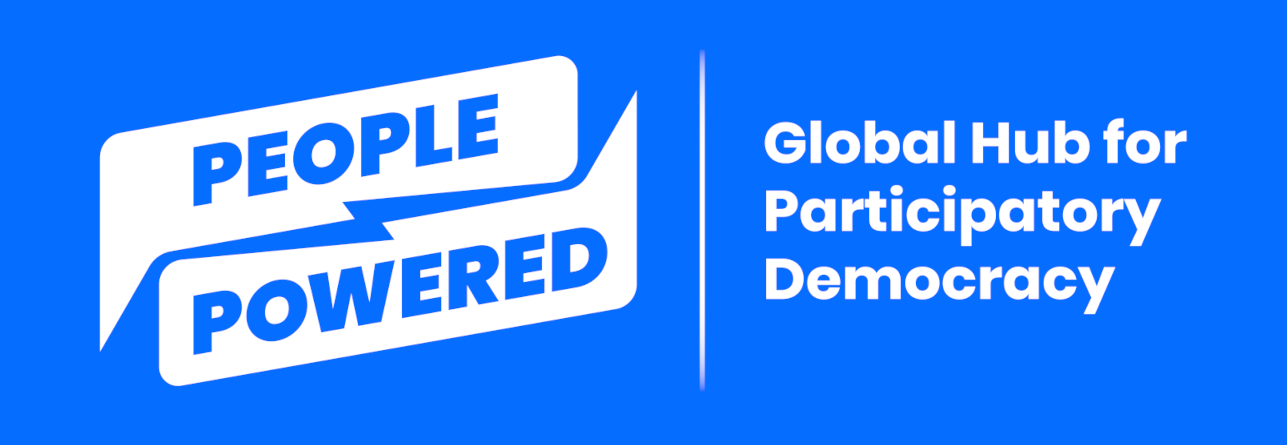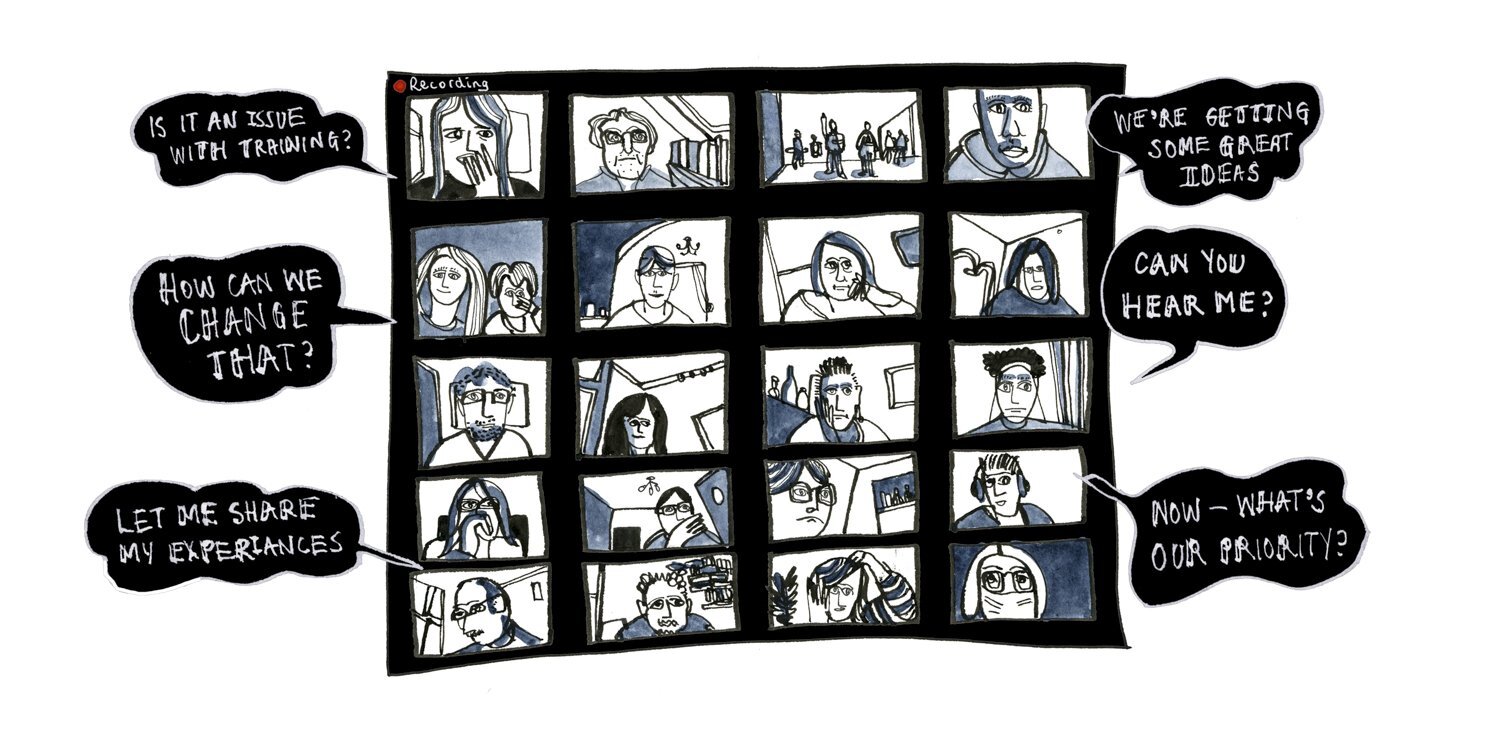Using Theatre to Make Policies: Legislative Theatre in Manchester
/When you imagine how local policies are made, what comes to mind? Long, dry meetings of politicians and policy wonks, far removed from the people who will be directly impacted? Now picture an alternate reality, where creativity, community, and collaboration are central to policy-making.
Legislative theatre brings the challenges communities face to life, inviting audience members from the impacted community (“spect-actors”) to act out solutions and collaborate with decision-makers to turn them into new laws and policies. Katy Rubin, who founded Theatre of the Oppressed NYC and has trained facilitators around the world, is using the technique to help community members create proposals for the homelessness prevention strategy of Greater Manchester (UK). People Powered spoke with Katy about her work in Manchester and her advice for cities excited about legislative theatre’s potential to drive community-centered change.
Screenshot of the legislative theatre event on Zoom. Actors wearing face shields sit around a table with a poster that says JOBS! JOBS! (Source: Greater Together Manchester)
People Powered: How did the Greater Manchester Combined Authority (GMCA) start using legislative theatre for its homelessness prevention strategy?
Katy Rubin: When I got to Manchester, there was a lot of interest at the Greater Manchester Homelessness Action Network (GMHAN) in making decisions in a more participatory, representative manner. At the same time, there was some frustration that the old way of conducting meetings and doing business wasn't facilitating the kind of power shift that was needed.
After I connected with them at an earlier event organized by Arts and Homelesness International, the GMCA and the GMHAN were excited to use legislative theatre to open up some of the decision-making for a locally planned homelessness prevention strategy that will encompass all of Greater Manchester (a combined authority of 10 local councils representing 2.8 million people) for the next five years.
“The actors in the plays are all community members — both people with lived experience and frontline staff — which is important because we’re trying to look at these issues from different angles.”
The GMHAN and I prioritized supporting a core group of facilitators with experience with homelessness who are training alongside the project. The actors in the plays are all community members — both people with lived experience and frontline staff — which is important because we’re trying to look at these issues from different angles.
We received a mandate for three plays in three issue areas: multiple disadvantage (the intersection of different needs and how they’re not addressed together); funding and commissioning (which organizations get funded to carry out different services around homelessness); and housing and infrastructure.
PP: How did the process work?
KR: We started in April during the lockdown, training with community leaders with experience with homelessness. If a project happens, it’s important that it include some kind of capacity building for future projects. What you need for legislative theatre is excellent facilitation. The trainees and I met for 9-10 weeks on Zoom, to learn the background and practice facilitation. Then, starting in July, we held over two months of weekly, in-person rehearsals, in which we used the Theatre of the Oppressed process around power structures relating to homeless services, addiction, recovery, and mental health.
The stories and exercises that emerged started to lead to scenes. We were constantly checking in with government partners about how these stories could relate to change at the local level, and we spoke with nonprofit staff and charities to get information about the process of housing allocation. What boxes do you have to tick? Who makes the decisions? We also worked with a visual artist to create a power tree about how these systems and different levels of government interact, which helped participants talk about power, race, class, and gender in relation to multiple disadvantage.
Artwork by Carmen Byrne. This power tree visualizes sources of power and disadvantage as roots, a trunk, branches, and wind. On the ground, a person is wrapped in the branches of multiple complex needs. Click the photo to view in more detail!
The theatre event lasted three hours. The actors performed the play in person, which was livestreamed to 120 people on Zoom. After the play, the audience discussed the problems presented, then stepped into the characters’ shoes to try out different ideas of what to do. For example, what if a person facing homelessness could work here at the Department of Work and Pensions (DWP)? The actors are trained to push back: I’ve had nothing but bad experiences at DWP, what would I do here? That led to deeper conversations: How to change the culture at DWP and support people with experience with homelessness to work in these spaces?
Artwork by Len Grant. From The Men's Room Legislative Theatre project. Participants in the Zoom event contribute in speech bubbles: “Is it an issue with training? How can we change that? Let me share my experiences.”
From there, breakout rooms of 3-4 people came up with policy proposals. While the audience took a break, we sorted the proposals into themes. We pitched the top three proposals back to the decision-makers: What would it take to implement these?
This is a moment when decision-makers may want to deflect and talk about what they’ve done already. In my experience, lower-level decision-makers are more willing to be creative and take the ideas forward. (Which poses a dilemma, of course: do they have the power to implement those changes?)
The last step has been really exciting. The decision-makers had to commit to a follow-up meeting with the actors and facilitators three weeks later. About 15 decision-makers attended. I facilitated, and we worked through each proposal. We tried to come up with specific proposals to include in the prevention strategy or action steps to further develop the ideas. We got really specific and people had a great time.
PP: What are the outcomes of the process so far?
KR: The policy shortlist includes proposals to improve holistic training for frontline staff, employ people with lived experience, share data across health and social care, redefine success criteria to be customer-defined, and train peer advocates with lived experience.
“It’s a three-stage process, which has power — getting people to feel this is a tool they’re using iteratively, and making them commit time and energy to the work.”
We let people continue to comment on proposals with a Google Form, and the recording is another useful tool for people who couldn't come. In December and January, we will also have two more lists of policy proposals for the other two issue areas. It’s a three-stage process, which has power — getting people to feel this is a tool they’re using iteratively, and making them commit time and energy to the work.
PP: What other effects have you seen on the participants, community, or government?
KR: The community response has been really great. There was lots of Twitter action from the first event. (You can search #GMLegislativeTheatre or #legislativetheatre.) A lot of people showing up, a consistent group of actors and facilitators, a consistent response that this is fun and can I do it again?
Blown away by @KatyRubinTO & team's performance and facilitation of #GMlegislativetheatre. We say it a lot but this really is doing things differently. Challenge, creativity, comedy - all in the name of policy making. @streetsupportuk
— Molly Bishop (@mollybish0p) September 30, 2020
Seeing folks who have not been engaged in decision-making processes and have not previously been in these meetings speaking up in the follow-up policy meeting with the strategic lead for homelessness and the head of DWP for Greater Manchester has been very powerful. It also meant that the meeting was more productive and interesting than the decision-makers are used to.
The decision-makers also seem excited to reimagine how they do things. One of the local councils, Rochdale, held an immediate meeting the evening after the event with all the people who had attended and wrote to me that they had an action plan. They were energized and wanted to bring staff together to debrief and support each other.
PP: What conditions are most important for successful legislative theatre?
KR: You need a policymaking goal: a clear problem and timeline. Along with the policy problem, there has to be an acknowledgement that there’s a human process problem. It also helps to have engaged community participants: organizations here in Greater Manchester were ready to recruit actors and audience members. You need a long enough period of time to build up energy and to devote to the play-making period.
“If you want to continue pushing forward policy proposals with the same energy of participation and dialogue and creativity, how do you do that without reverting to the way business is done?”
Participation takes a different kind of staff time. If you want to continue pushing forward policy proposals with the same energy of participation and dialogue and creativity, how do you do that without reverting to the way business is done? I can see that balls are going to be dropped — community input is going to get dropped — unless someone puts in a lot of time.
Interested in using legislative theatre to solve problems in your community? Contact Katy to learn more.
More Resources
Check out legislative theatre materials at our Resource Center.
Read Policy proposals from the Legislative Theatre event on 30th September.
Listen to the podcast CulturePlanB interview Katy.






